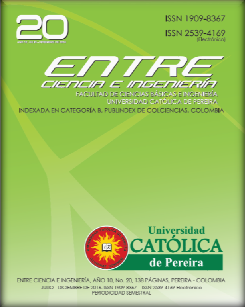Experiences in teaching of chemistry using laboratory kits
Keywords:
teaching of science, science kits, lab work, attitudes, active learningAbstract
This article presents a proposal to address the negative attitudes towards science, through practical classroom work. This method is based on teaching kits developed by students and teachers within school science research aimed. The kits allow active processes to develop the teaching and learning process of science in a better way, fail to motivate students and improve their attitudes towards science, build explanatory models and conduct research without needing a laboratory or specialized materials. Teachers who participated in the implementation of the methodology appropriated this, they developed a positive attitude towards its use and conceived as a solution to address the lack of practical sessions in teaching science.
References
M. F. Molina, J. G. Carriazo, and D. M. Farías, “Aprendiendo estequiometría a través de proyectos de investigación en el laboratorio de química general. De la teoría a la práctica en enseñanza por investigación”, en II Coloquio Investigación e Innovación en la Enseñanza de las Ciencias. Universidad Católica de Colombia, 28 y 30 de mayo del 2008.
M. F. Molina, D. M. Farías, and J. A. Casas, “El trabajo experimental en los cursos de Química básica”. Investigación e Innovación en Enseñanza de las Ciencias “Teorías y enfoques didácticos, 51-59, 2006.
M. F. Molina y D. M. Farías. “Conocimiento de la importancia del trabajo experimental en la enseñanza de la química en la educación secundaria”. Tecne, Episteme y Didaxis, 145, 2005.
N. Sanmartí, C. Márquez, and P. García. “Los trabajos prácticos, punto de partida para aprender ciencias.” Aula de innovación educativa 113, 8-13, 2002.
D. Hodson, “Hacia un enfoque más crítico del trabajo de laboratorio”, Enseñanza de las Ciencias. Vol. 12, 1994.
A. Caamaño, “Experiencias, experimentos ilustrativos, ejercicios prácticos e investigaciones:¿ una clasificación útil de los trabajos prácticos.” Alambique 39, 8, 19, 2004.
M. Prince, “Does active learning work? A review of the research.” Journal Of Engineering Education -Washington- 93, 223-232, 2004.
G. Huber, “Aprendizaje activo y metodologías educativas Active learning and methods of teaching.” Tiempos de cambio universitario en 59, 2008.
D. Kennepohl, & A. M. Last. “Teaching chemistry at Canada’s open university.” Distance Education 21.1, 183-197, 2000.
J. M. Foley, B. C. Bruno, R. T. Tolman, R. S. Kagami, M. H. Hsia, B. Mayer, and J. K. Inazu, “2C-MORE Science Kits as a Classroom Learning Tool”, Journal of Geoscience Education 61, 256–267, 2013.
N. I. Kurbanoglu, & A. Akim, “The Relationships between University Students’ Chemistry Laboratory Anxiety, Attitudes, and Self-Efficacy Beliefs”. Australian Journal of Teacher Education, 35, 48-59.2010.
D, Cheung, “Students’ attitudes toward chemistry lessons: the interaction effect between grade level and gender”. Research in Science Education, 39, 75-91.2009.
T. L. Wang, & D. Berlin, “Construction and Validation of an Instrument to Measure Taiwanese Elementary Students’ Attitudes toward Their Science Class”. International Journal of Science Education, 32, 18, 2413-2428.2010.
M. F. Molina, J. G. Carriazo, and J. Casas, “Estudio transversal de las actitudes hacia la ciencia en estudiantes de grados quinto a undécimo. Adaptación y aplicación de un instrumento para valorar actitudes”, Tecne, Episteme y Didaxis, 103, 2013.








 Revista Entre Ciencia e Ingeniería
Revista Entre Ciencia e Ingeniería .png) entrecei@ucp.edu.co
entrecei@ucp.edu.co.png) ISSN (Impreso) 1909-8367 - ISSN (En Línea) 2539-4169
ISSN (Impreso) 1909-8367 - ISSN (En Línea) 2539-4169 Attribution-NonCommercial 4.0 International (CC By-NC 4.0)
Attribution-NonCommercial 4.0 International (CC By-NC 4.0)
.png) Carrera 21 No. 49-95 Av. de las Américas, Pereira, Risaralda, Colombia
Carrera 21 No. 49-95 Av. de las Américas, Pereira, Risaralda, Colombia